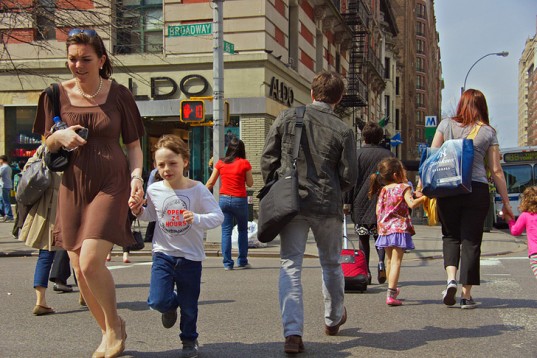
It is really hard to believe that a group of researchers would be examining this issue, and even harder to fathom that Elsevier chooses to advance this through their social media and on-line presence. But here it is~in this article by several French researchers at the aptly named “French Institute of Science and Technology for Transport, Development and Networks, Laboratory for Road Operations, Perception, Simulators and Simulations” researchers in Versailles actually created a pedestrian dog collar.
Using vibrotactile technology on wristbands that vibrated on pedestrians’ arms when vehicles were approaching, 57 participants were asked to cross a two-way traffic street. Senior pedestrians are overrepresented in fatal traffic incidents, with the researchers surmising that this was because older people have “gap” challenges, unable to ascertain the speed of approaching traffic. This same inability to judge traffic speed when crossing a street was discussed in this Price Tags Vancouver post from last year, where researchers found that children under 14 years of age did not have the perceptual judgement or motor skills to safely cross the road.
While the researchers found that the percentage of pedestrians being crashed into by simulated cars decreased, “collisions did not fall to zero, and responses that were in accordance with the wristband advice went up to only 51.6% on average, for all participants. ”
While the vibrating wristband was shunned by younger participants as something they would ever use, “behavioral intentions to buy and use such a device in the future were greater in both groups of older participants.” This device only reduced by fifty per cent the likelihood of pedestrians being crashed into by vehicles. But as the researchers conclude “This haptic device was able to partly compensate for some age-related gap-acceptance difficulties and reduce street-crossing risks for all users. These findings could be fruitfully applied to the design of devices allowing communication between vehicles, infrastructures, and pedestrians.”
New Zealand Civil Engineer and Phd Candidate Bridget Burdett summed up this study and its proposed use with automated vehicles below.


